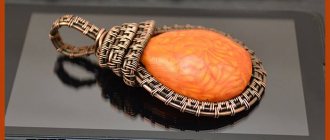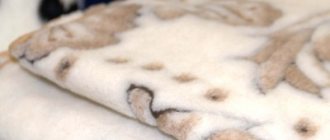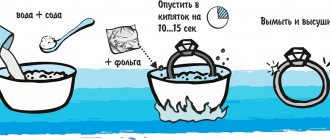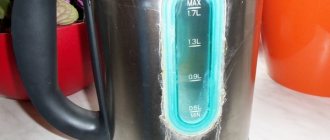What to do if your nail is broken?
There are a lot of techniques and technologies that allow you to seal cracks and build up a broken nail. It all depends on what is available and how advanced a user or customer you are. If a girl has little knowledge of manicure and leaves almost all the work on the shoulders of professionals, then you can use the simplest techniques.
What to do if your nail is broken:
- No matter how strange this method may seem, it works; thin threads act as reinforcing fibers that prevent the crack from increasing in size. To do this, you need to remove the coating from the nail, file the surface a little so that it becomes rough.
- Under no circumstances try to remove a large amount of the nail, because it will be difficult for the technician to repair it and increase its length. It is necessary to degrease the crack with alcohol and apply a small amount of regular superglue.
- Now lay out a few thin fibers of cotton wool, which can be plucked from a piece using eyebrow tweezers. Place thin fibers across the crack so that they hold the nail pieces together. When the glue has dried, you can apply another layer of glue with a thin brush. After drying, you can use a decorative coating.
Broken nail
Causes of fragility
Brittle nails can be caused by both external and internal reasons. After the nail is repaired and the threat has passed, be sure to analyze the situation and determine whether the reasons listed below are appropriate in your case:
- unbalanced diet and lack of vitamins. Vitamin deficiency is a common cause of fragility. The nail plate becomes thinner and becomes vulnerable to external influences - mild mechanical shocks, snags on clothing;
- mechanical impact - a one-time impact on a hard surface;
- systematic mechanical influences, for example, working on a keyboard;
- coating without a base coat;
- hand contact with high or low temperatures.
Nail structure and growth: what healthy nails and skin should look like, care rules
Nail health during manicure and pedicure: what a novice master should pay attention to
How to cover a nail with silk at home?
Another good method that is often used by home users is the use of silk. It can be found in any manicure store. It would be nice if every girl had similar products for repairing cracked nails. You can repair both extended and natural nails.
Instructions on how to seal a nail with silk at home:
- To do this, you also need to prepare the nail by first removing the decorative coating and degreasing it. After this, a special nail glue is applied, which is sold in a manicure store.
- A small patch is cut out from a piece of silk. Next, you need to apply a little glue to the crack area and attach a piece of silk. Press the patch with an orange stick so that it is completely saturated with glue.
- Let dry. After this, you can carry out a surface sawing in order to remove protruding silk fibers, if any.
Repair
How does gel polish compare favorably with regular polish?
Firstly, it is easier to apply - if a simple varnish, even the freshest one, is prone to gaps and stripes on the nail, then the gel, due to its density, instantly lies on the nail plate in an even layer. Often, gel polish does not require reapplication.
The second well-known advantage is the durability of the coating. This advantage can be a disadvantage for girls whose nails grow quite quickly, but if the length of your nails does not change much over the course of a week, long-lasting polish will be your salvation. Gel coating is also suitable for those with fragile, brittle nails: the gel literally “walls up” all the defects of the plate.
How to do a manicure with gel polish at home?
We will talk about all stages of this process.
Nail preparation
Any manicure should always begin with proper nail preparation. First of all, you should work with the cuticle - it should either be trimmed or carefully pushed back.
How to remove cuticle?
Even those with thin skin prone to injury can remove it, but do not forget to steam your fingers first. Soak your hands in the hot bath and then begin removing the cuticles. First, lift it with a special spatula - the skin should completely move away from the nail. After this, trim the cuticle using a sharp trimmer or well-sharpened thin scissors. If you do injure the skin around your fingers, immediately treat the wounds with peroxide and lubricate your nails with coconut or apricot oil.
If the skin around the nails is quite dense and not prone to injury, you can remove the cuticle “dry” - in this case, the procedure will be exactly the same, with the exception of the first step with warming up the fingers.
If you don’t do a trimmed manicure on principle, it’s still worth steaming the cuticle - so that it’s easier to push it back with a spatula. Even with this method of dealing with cuticles, the skin may be slightly damaged, so keep peroxide and nourishing cream on hand.
After removing or pushing back the cuticle, you should proceed to giving the nails the desired shape. The most popular one is square on short nails, but if the nail plate is set quite low, choose an oval shape - it will visually “stretch” your fingers. Everyone knows how to shape nails - using a file. But opt for a glass instrument. Do not cut your nails with clippers or scissors if they are prone to splitting - carefully file the plate to the required length.
After shaping, polish the surface of the nail with a buff, then remove dust with a brush and apply nourishing oil or cream to your fingers. Before applying gel polish to your nails, make sure that their shape is uniform and that there are no burrs or cuticle particles left around.
Varnish coating
What do you need to do a gel manicure? The basic necessary tool is an LED or UF lamp. Without it, the coating will not adhere to the nail properly, and the drying process will take much longer.
The gel polish firmly settles on the nail, therefore, to facilitate the removal process in the future, it is necessary to apply a primer to the plate - it will smooth the surface of the nail and will not allow the polish to be firmly “absorbed.” You'll thank yourself for taking this step before you remove the gel polish.
After applying the gel, you need to paint your nails with a topcoat, which will give the varnish shine and durability.
Now let's move on to the procedure.
First, coat your nails with primer, then proceed to applying the gel itself. Make single and confident movements with the brush, do not smear the polish on the surface of the nail. Place your hands into the LED lamp, being careful not to smear the gel, repeat the process if necessary. If the color saturation seems insufficient to you, apply a second coat of varnish.
After the gel, fix the result with a top coat - a protective glossy coating that will provide the varnish with greater durability.
List of sources
- vokrug-nas.ru
- ufologov.net
- salon-nagorkogo.ru
- nails-health.ru
- jawoman.ru
- idealnyi-manikur.ru
- ameno.ru
How to seal a nail with a tea bag?
If you do not have the opportunity to purchase repair products, you can use a regular tea bag.
Instructions on how to seal a nail with a tea bag:
- It is best to use fabric bags rather than paper bags for these purposes. They are usually sold for Lipton and Kurtis teas.
- Cut a piece of fiber and apply it to a grease-free nail using superglue.
- The nail will be worn for a long time, and the thin fiber will not stand out from under the coating.
Tea bag
Nail extension repair
Extensions are done with acrylic tips. They do not have a living structure, so if they break off, they can be glued with synthetic glue for plastic (superglue, “Moment”). The fastening materials are the same - filter paper, silk strips, paper plaster.
The technology for gluing the extended plate is as follows:
If repairing the extended nail is impossible, you can replace it with a new one.
Apply glue to the nail and place a cut-out paper strip on top of it.
Place another drop of glue on top of the strip. Apply the third layer of glue on top of the dried second.
Treat the repair area with a nail file. Apply varnish on top.
Another repair option is to replace the broken tip with a new one.
How to seal a crack with fiberglass nails?
If you are proficient in manicure techniques, or have some minimal experience in working with gel polishes, and have an ultraviolet lamp available, then repairing the crack will be much easier and faster. To do this, you can use both a special tool and improvised items. The ideal option is to use fiberglass. This is a popular product that is now back in trend.
Instructions on how to seal a crack with fiberglass nails:
- With its help, you can not only build up and strengthen the nail, but also close the crack and prevent further damage to the nail. Most often, cracks form in the zone of transition of the free edge to the nail bed; they can be quite painful, even along the flesh.
- In this case, it is better not to delay the repair or completely cut off the nail at the root, and seal it as soon as possible. For these purposes, the coating is removed from the nail, the plate is degreased, and a thin layer of base is applied. You need to take the fiberglass, coat the nail with the base again and place pieces of fiberglass on it so that they lie across the crack. In general, repairs resemble those carried out using cotton wool fibers.
- Only in this case, fiberglass is used, it is much stronger and has reinforcing properties. The possibility that a fiberglass-reinforced nail will soon break is almost zero. Next, you need to apply a leveling layer of base to hide the pieces of fiberglass and make the nail even. After this, you can apply a decorative coating.
Fiberglass repair
Tips for preventing the problem
To keep your nails in good condition, you need to adhere to the following recommendations:
- saw in one direction, this way you can prevent the appearance of cracks;
- do not cut it too short to avoid nails growing into the meat;
- massage your hands regularly;
- steam the nail plates before the manicure procedure;
- eat meat and fish dishes, herbs, vegetables and fruits daily;
- thoroughly dry your hands after contact with water;
- use only high-quality tools and materials for nail care.
You can keep your nails in good condition not only by following the necessary rules, but also by using the services of specialists. Salons offer the following procedures:
- wax or paraffin applications;
- spa or aromatherapy;
- Japanese manicure;
- ultraphoresis;
- sealing;
- biogel.
Such procedures should only be performed by trusted specialists.
Healthy and neat nails indicate not only the neatness of a person, but also the condition of his internal organs. Therefore, you need to regularly take care of your body, consume as many vitamins as possible and give up bad habits. It is quite difficult to prevent nail damage, but if it has already happened, you need to approach this situation wisely.
The extended nail is broken, what should I do?
Very often, manicurists do not use any additional products, but carry out repairs using gel, acrylic or acrylic. This method also works, but it is necessary to cut out the nail from the inside after the repair is completed. This is due to the fact that very often the edges of the cracks are torn, so in such places they form from the puff paste.
That is why the nail is cut out after repair, leaving only the artificial coating. However, this option is only possible if you use artificial nail polish and do not simply strengthen your nails using acrylic, gel or polygel.
An extended nail breaks, what to do:
- If you don’t have acrylic or gel, because you are working only with gel polish application technology, you can prepare a paste that will also strengthen the nail and become a reinforcing base. For these purposes, you need to mix a small amount of gel polish base with transparent acrylic powder on a palette.
- It is necessary to obtain a thick mass. It is applied with a brush to the prepared nail, having previously distributed a small amount of base. After the patch is installed, it is dried in a lamp, and then sawing is carried out to smooth out the unevenness.
- You can repeat the alignment with a regular base in order to hide the transition from the patch to the natural nail. This method is also great and does not require gel or special nail repair products in the house.
Repair
Crack under gel coating
In order to glue the nail under the gel polish, you need to remove the polish. You don’t have to remove all your fingers, limit yourself to just the broken nail, and leave the rest alone. For removal, use special means for removing Shellac or biogel, depending on the coating of the nail. If you can’t remove the gel polish, you can glue a patch over the old coating.
A “patch” is applied to the place where the nail is broken.
The technique of applying a patch to gel polish is the same as for a natural nail, and it is covered with a new varnish, which is dried under a UV lamp. For home repairs using gel technology, you need a UV lamp and gel polish.
If the crack is located along the edge of the nail, then it can be cut off and rebuilt with biogel . To do this, use a special form or foil, which is placed under the nail and used as a support for applying the biogel. After the biogel hardens under a UV lamp, the foil is carefully removed.
How to build up a broken nail with biogel or a rubber-based base coat, see the video instructions:
How to cover a nail with a plaster?
Now on sale you can find a special repair gel that contains reinforcing fibers. It resembles a suspension of small fibers in a gel. They are worn with a brush; the fibers can be straightened using tweezers. It is made using gel technology and is dried in a lamp.
How to cover a nail with a plaster:
- If the nail is broken at the root, it hurts and bleeds, then the ideal option is to leave it alone and apply a band-aid.
- Pre-disinfect your nails and apply a bandage so that the nail is not injured and dirt does not get into it.
- After a few days, you can remove the patch, clean off the glue with alcohol and begin extending or restoring the nail. There is no need to work live when there is meat or a crack.
Patch
The main reasons for the fragility of the nail plate
The structure of the nail plate can be damaged for several reasons:
- prolonged contact with water;
- exposure to high and low temperatures;
- negative effects of ultraviolet radiation;
- frequent contact with chemicals: nail polish remover, household chemicals, decorative varnishes and gels, etc.;
- use of low-quality nail care tools;
- improper implementation of cosmetic procedures: extensions, manicure;
- mechanical damage.
All these circumstances lead to overdrying of the sheet plate, and therefore it becomes brittle and brittle.
Also, the condition of the nails can be caused by several factors:
- insufficient intake of vitamins and minerals as a result of aggressive diets or poor nutrition;
- chronic stress;
- regular overwork;
- fungal diseases;
- hormonal disorders;
- psoriasis;
- bad habits.
Important! Despite the fact that cuticles seem unattractive and spoil the aesthetic appearance of your nails, cutting them is not recommended.
What to do if your nail breaks in the middle?
This usually happens in the case of overextension of coverage, when clients ignore the words of the master and come for correction less than once every 3 weeks. This happens after 5 weeks of wear, the apex line shifts significantly towards the free edge. Therefore, the stress zone remains open and has a very thin layer of material on it.
Thus, the free edge outweighs, which can cause a crack right in the middle of the nail. This is very inconvenient and often painful, because not only the artificial coating cracks, but also the natural nail plate.
The nail is broken in the middle, instructions:
- Blood may also be released. In this case, it is necessary to remove the coating using a milling cutter, disinfect the wound with alcohol or another antiseptic, and remove all shaggy hair and fringe that has formed at the site of the crack.
- Now you need to choose a nail repair method. It is best to use special gels with proteins that heal the nail plate, promote fusion, preventing the emergence of bacteria and fungi in the area of the crack or wound.
- However, it is worth understanding that only professional craftsmen have such products; in addition, such a gel quickly becomes unusable under the influence of water and acetone-containing liquids. Accordingly, when doing homework, you must wear rubber gloves.
- There are special means that podiatrists use. These are gels that can be applied directly to living tissue, even if it is damaged. Typically used for extensions and patches for onycholysis or fungal nails. Accordingly, you can fix a broken nail down to the meat in the middle using this gel. The nail plate is prepared in the standard way, the top coat is removed, and a thin layer of base is applied, and then the gel. It is dried in a lamp and sawdust is produced.
Nail repair
There are a huge number of methods for repairing nails at home. It all depends on the materials you have and how well you know the gel polish or nail extension technique. Ordinary home users most often choose the simplest methods for nail repair, using silk, cotton wool, tea bags and superglue.
How to fix a broken nail?
Breakage of the nail plate causes a lot of inconvenience and discomfort. However, there are several ways to restore its original appearance.
Natural
Clinging to various surfaces, a cracked nail on the hand can come off at any time, which will lead to bleeding and severe pain. If for some reason it is impossible to visit the salon, you need to fix the broken nail yourself.
Important! The procedures for restoring natural and extended nails are completely different.
First of all, you need to remove the varnish coating from the broken nail. To do this you will need the following tools:
- file;
- foil or similar material;
- orange stick for manicure;
- fat cream;
- nail polish remover;
- cotton pads.
Restoring a broken nail is carried out in several stages:
- The top layer of the coating is cut off and the top section of the nail is lightly ground down.
Cream is applied to the finger (up to the 2nd phalanx inclusive), a cotton pad is moistened in the liquid and wrapped around the finger, and wrapped with foil on top so that alcohol or acetone vapors cannot quickly evaporate. After 15 minutes, the foil, disc and gel polish coating are removed using an orange stick. All steps can be repeated again if the first attempt does not bring the desired result. - Thoroughly polish the damaged area.
- Place foil under the nail plate, having previously folded it into 4 layers or a form specially designed for nail repair. Then secure with adhesive tape.
- Degrease the nail.
- Apply primer and dry using a UF lamp.
- Apply a rubber-based base to the treated area, then apply a strip of foil to the desired length of the nail, join the sectors and also apply a layer of base on it with a thickness exceeding the thickness of the nail layer.
- Dry thoroughly under an ultraviolet lamp.
- Paint the artificial nail with gel polish in 2 layers.
- Dry under a lamp.
- Straighten the nail using a nail file and nail scissors.
You can repair a nail using a special manicure glue; if you don’t have it on hand, use its industrial analogue. The algorithm of actions is as follows:
- wash and dry your hands thoroughly;
- place the finger with the damaged nail in warm water and hold for 5-7 minutes to soften;
- dry your finger and apply a drop of glue to the nail, distributing it evenly over the nail plate;
- press for 2-3 minutes;
- eliminate excess adhesive;
- sand with a file;
- apply decorative varnish.
Extended
Restoration of extended nails is carried out in several ways, which can be used:
- special silk;
- acrylic Powder;
- tea bag;
- medical plaster;
- biogel;
- acrylic.
Important! If the damage under the shellac (natural resin) is not too severe, then filing off the nail and growing a new one is not at all necessary.
Repairing a broken nail is carried out in several stages:
- cut out a patch of a suitable size from a tea bag, plaster or other available material;
- glue the patch to the damaged area using glue with strong fixation;
- Apply an adhesive layer to the glued material, and after it dries, repeat the procedure several times;
- polish the restored part using a file;
- degrease, apply base, top and gel polish;
- dry in a UF lamp.
Crack on the side under the gel polish
The resulting defect can be eliminated using special glue and acrylic powder. Repairs should proceed as follows:
- remove shellac;
- degrease and disinfect;
- perform polishing;
- coat the crack and the area around it with adhesive;
- dip the finger with the cracked nail into a container of acrylic powder and leave for 2-3 minutes;
- remove excess powder and dry using a UF lamp;
- After sanding and degreasing, apply primer, base, top and gel polish.
Before applying each material, dry the previous layer well in a UF lamp.
The video clearly shows how to repair a crack on an extended nail:
Broke on the side
A nail that is broken on the side is repaired by applying fabric or paper strips.
- The broken edge is filed and disinfected.
- 2 strips are cut out of paper. One should be slightly larger than the break line, the other should coincide with the main length of the nail.
- A smaller strip is coated with glue, applied to the nail and fixed.
- After hardening, the material is sanded and fixed with a large patch.
- Using a sharp toothpick, the plate is straightened, merging with the rest of the nail, glued, trimmed and polished.
- The plate is coated with a transparent decorative coating on top of the glue.
A plate injured at the root can only be restored in a salon setting.
In case of severe damage affecting the subungual tissue, it is necessary:
- Remove chips with small scissors and treat the wound with Chlorhexidine or Miramistin.
- Stop bleeding (if it occurs).
- Remove the protruding edges of the broken plate to allow further growth of the crack.
- Place your hand in cold water (to reduce pain).
- Twice a day, put your hand in a bath containing 100 ml of boiled water and 1.5 tsp. table (sea) salt. This procedure must be done within 4 days after the injury.
- Apply a gauze bandage with healing ointment to the damaged skin. This measure will help to avoid further injuries to the plate caused by mechanical stress.
A broken nail can only be restored in a salon after the subungual tissue has completely healed. For this procedure, a special protein biogel is used. After restoration, all household work should be done only with gloves to avoid dissolving the gel with chemical detergents.
Reasons depending on surface type
Natural nails
On natural nails, gel polish can also crack.
The following factors contribute to this:
Read also: Frigidity in women
- frequent hand washing;
- changes in hormonal levels during the procedure;
- long-term use of antibiotics;
- low-quality manicure accessories;
- hormonal changes in the body;
- some diseases;
- incorrect application of the gel.
An unhealthy nail plate is a common cause of cracks.
Extended nails
Reasons that can trigger the formation of cracks on extended nails:
- non-compliance with extension techniques;
- incorrect application procedure;
- mechanical damage;
- poor quality material;
- applying a thick or thin layer.
Contact with water and household chemicals also negatively affect the gel on extended nails.











